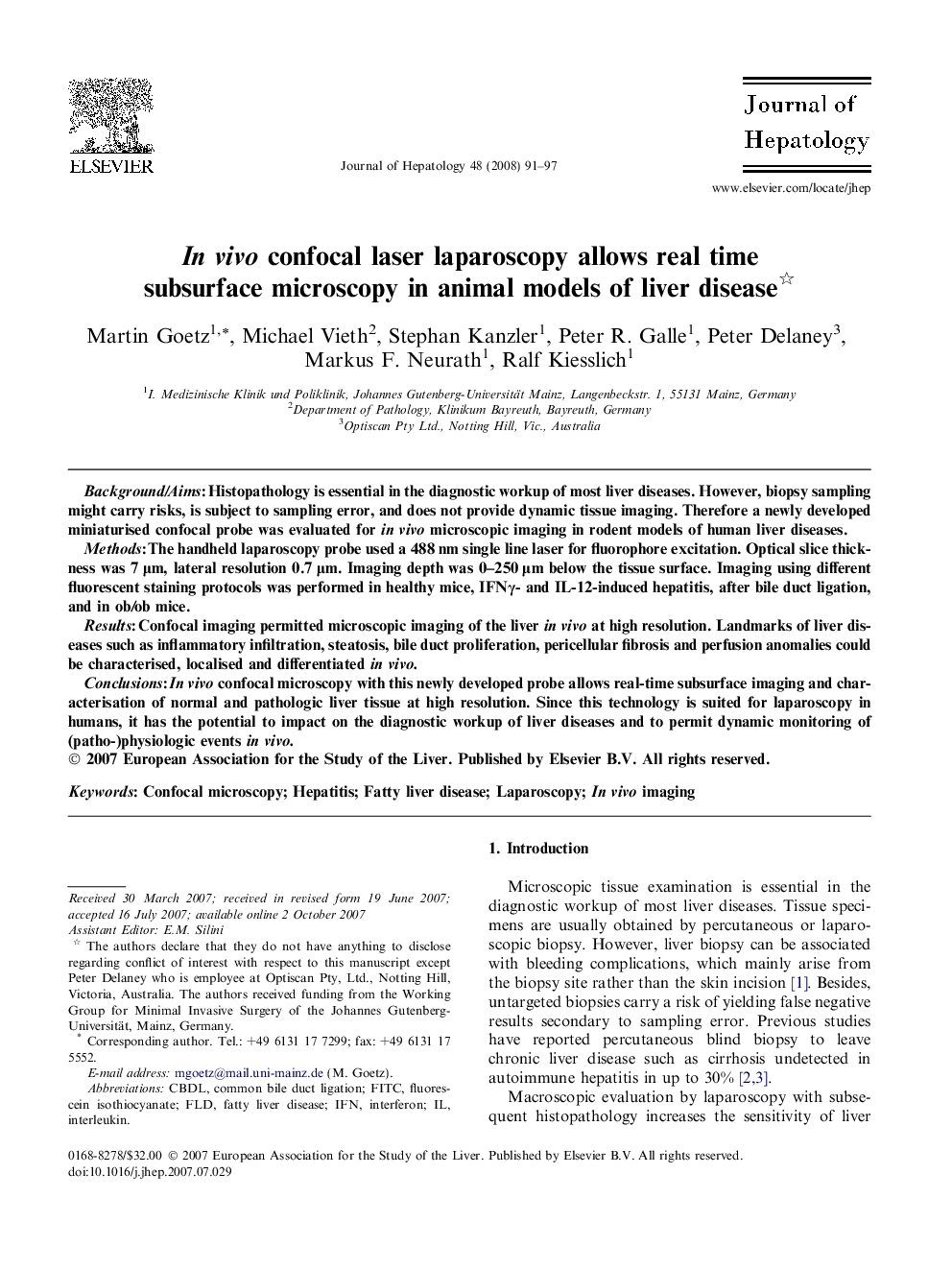| Article ID | Journal | Published Year | Pages | File Type |
|---|---|---|---|---|
| 3315456 | Journal of Hepatology | 2008 | 7 Pages |
Background/AimsHistopathology is essential in the diagnostic workup of most liver diseases. However, biopsy sampling might carry risks, is subject to sampling error, and does not provide dynamic tissue imaging. Therefore a newly developed miniaturised confocal probe was evaluated for in vivo microscopic imaging in rodent models of human liver diseases.MethodsThe handheld laparoscopy probe used a 488 nm single line laser for fluorophore excitation. Optical slice thickness was 7 μm, lateral resolution 0.7 μm. Imaging depth was 0–250 μm below the tissue surface. Imaging using different fluorescent staining protocols was performed in healthy mice, IFNγ- and IL-12-induced hepatitis, after bile duct ligation, and in ob/ob mice.ResultsConfocal imaging permitted microscopic imaging of the liver in vivo at high resolution. Landmarks of liver diseases such as inflammatory infiltration, steatosis, bile duct proliferation, pericellular fibrosis and perfusion anomalies could be characterised, localised and differentiated in vivo.ConclusionsIn vivo confocal microscopy with this newly developed probe allows real-time subsurface imaging and characterisation of normal and pathologic liver tissue at high resolution. Since this technology is suited for laparoscopy in humans, it has the potential to impact on the diagnostic workup of liver diseases and to permit dynamic monitoring of (patho-)physiologic events in vivo.
